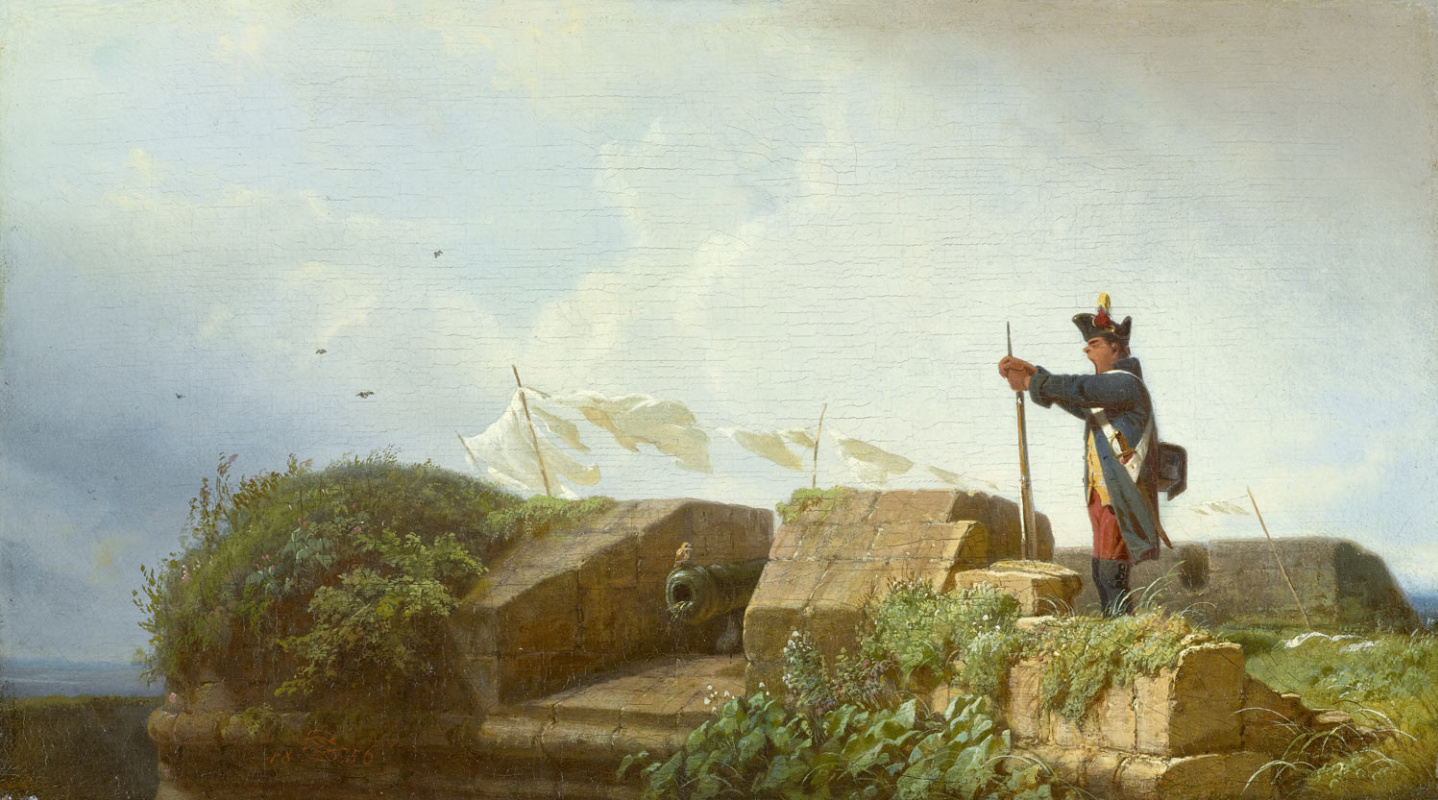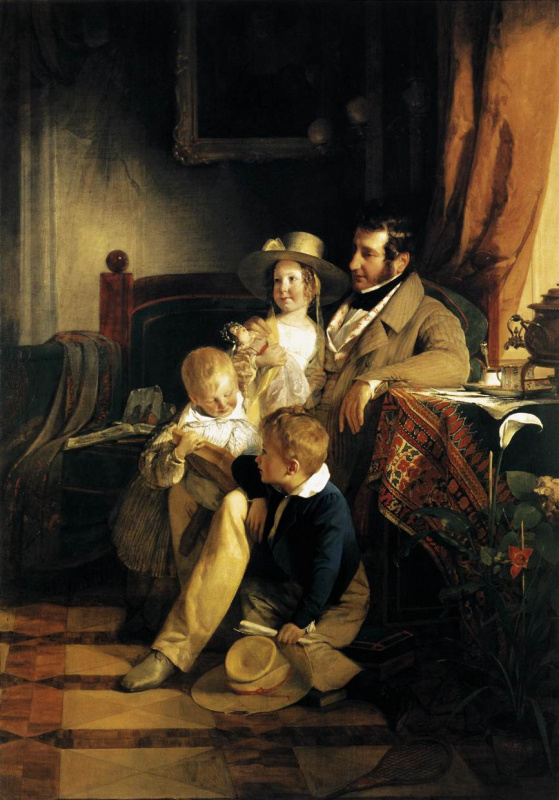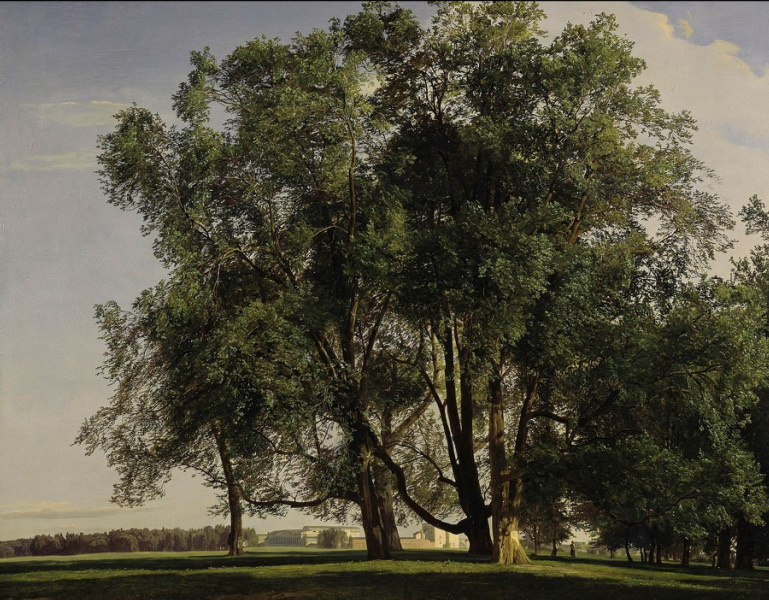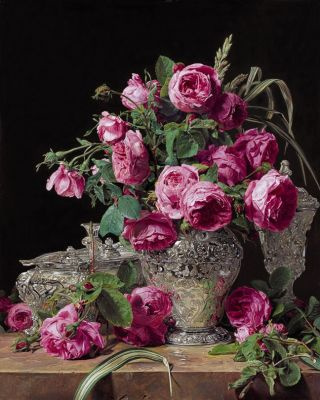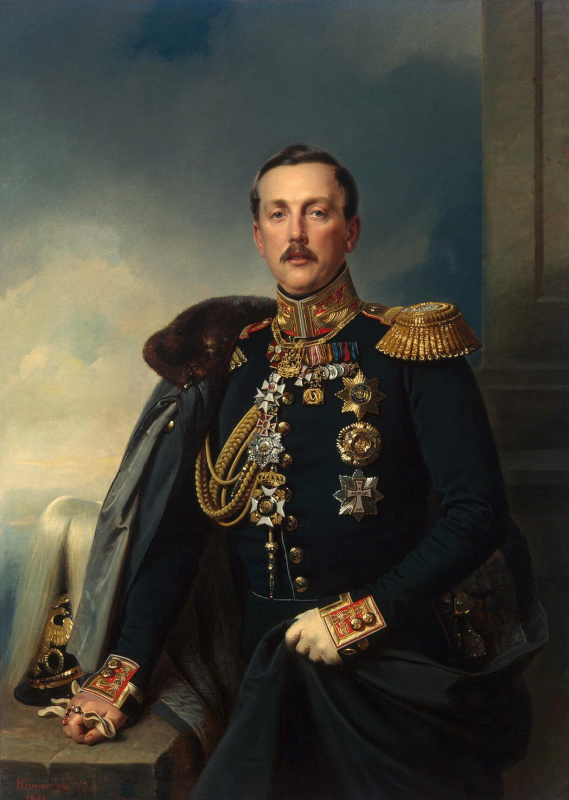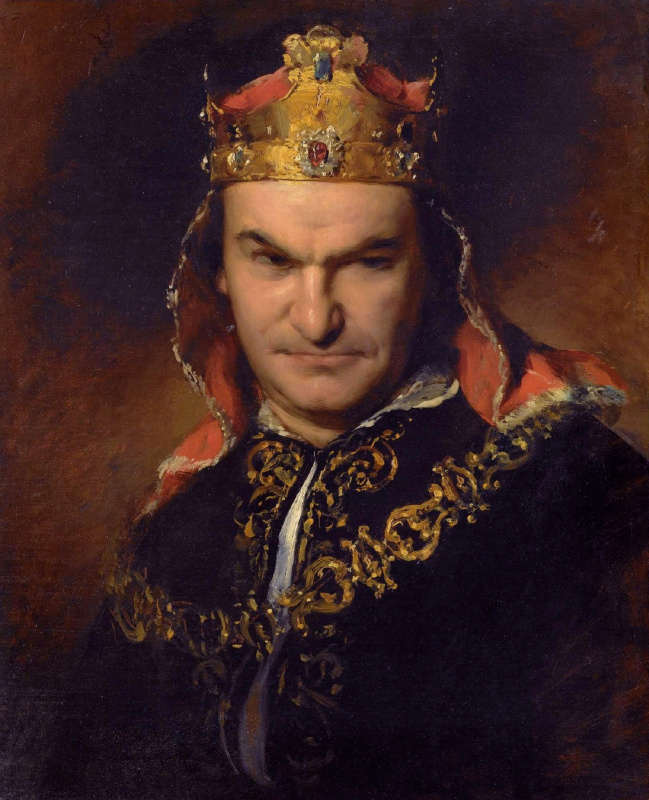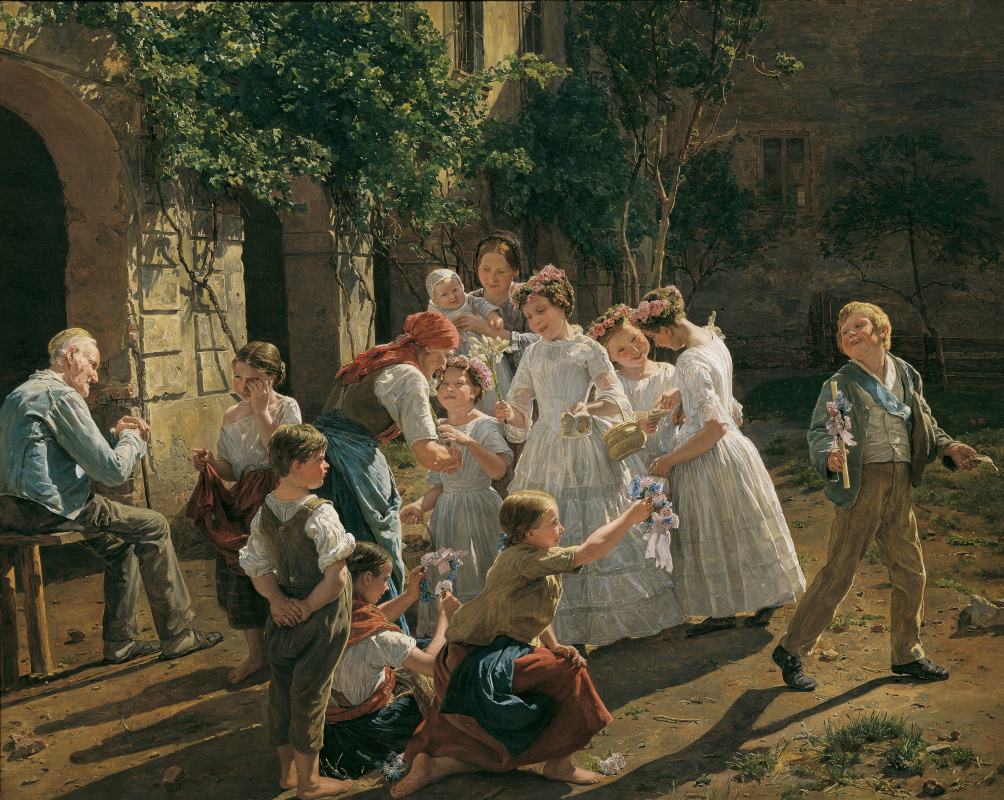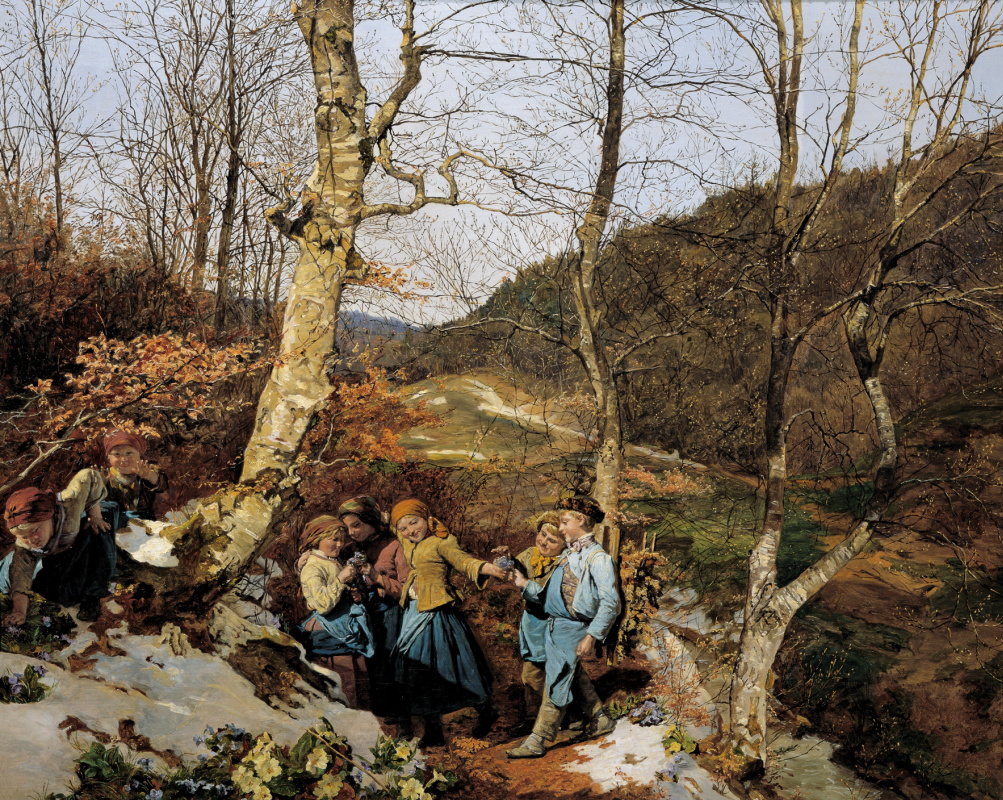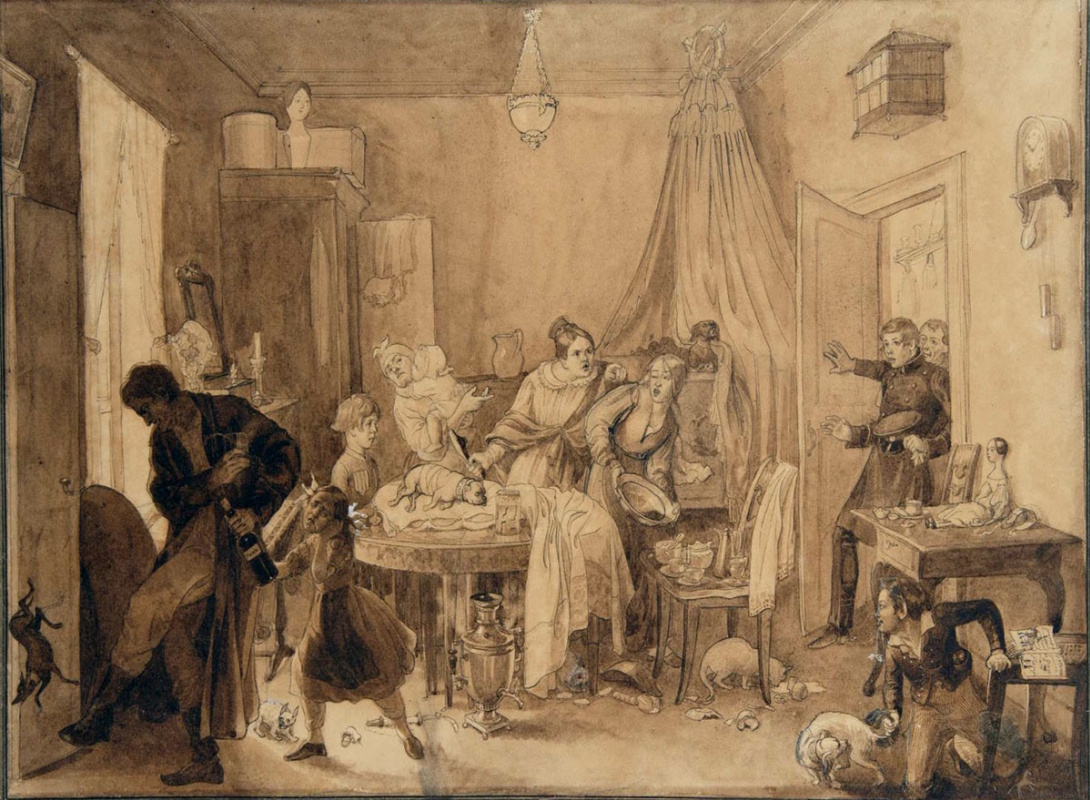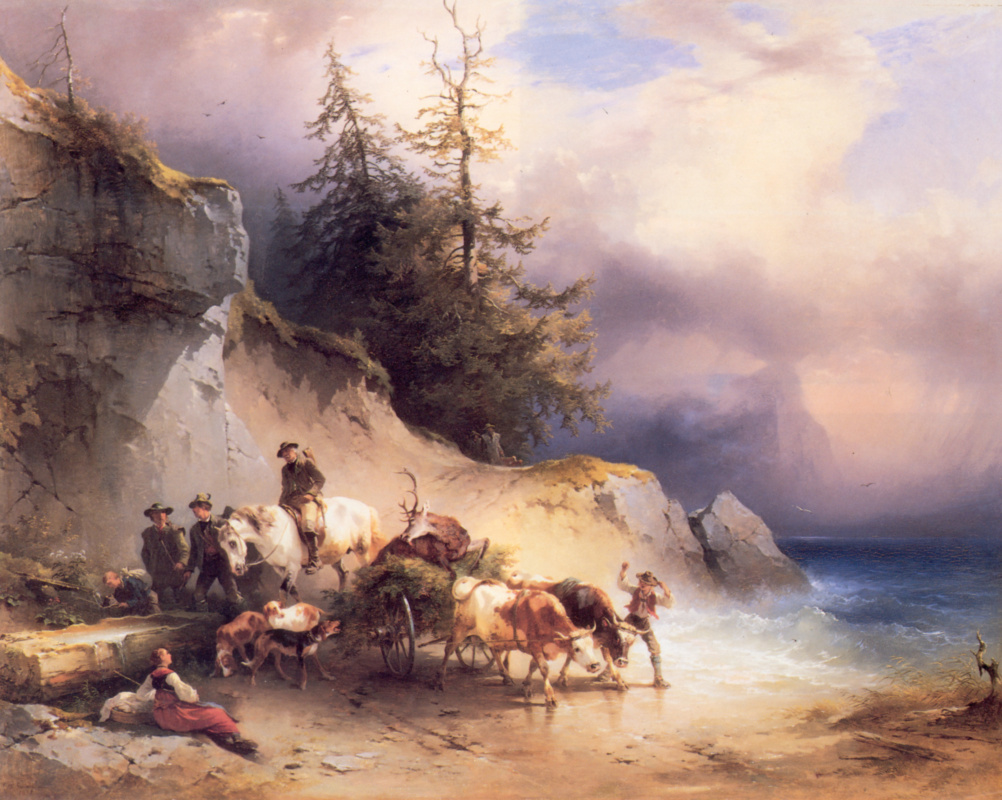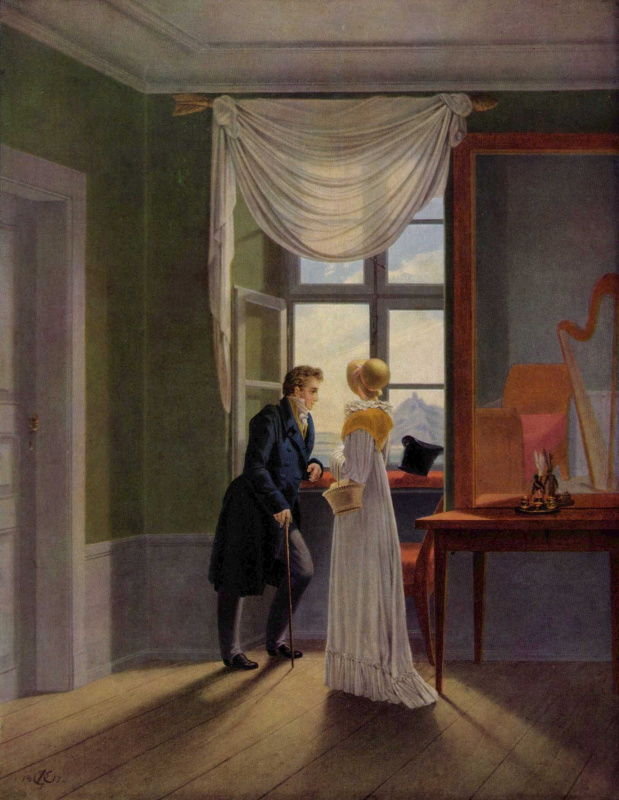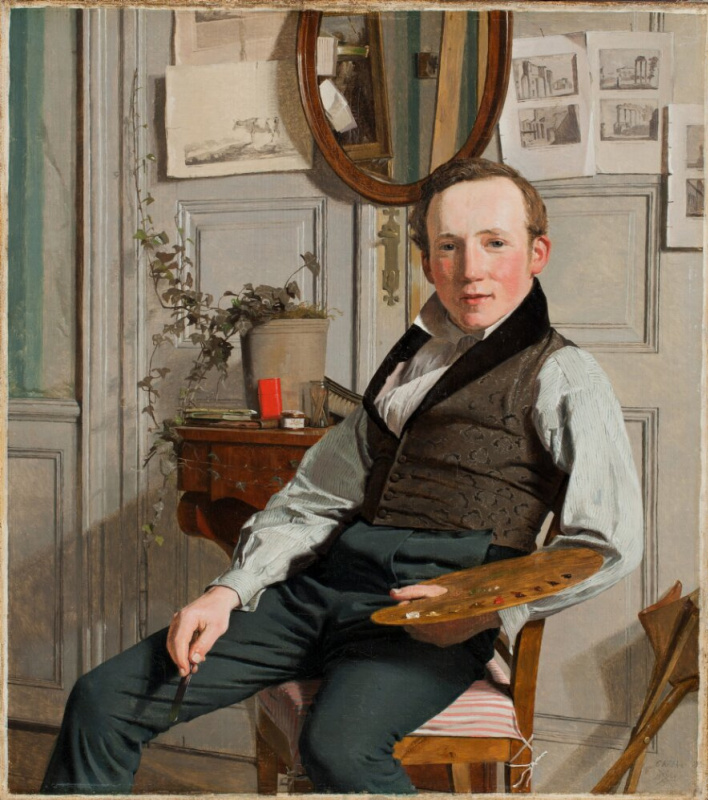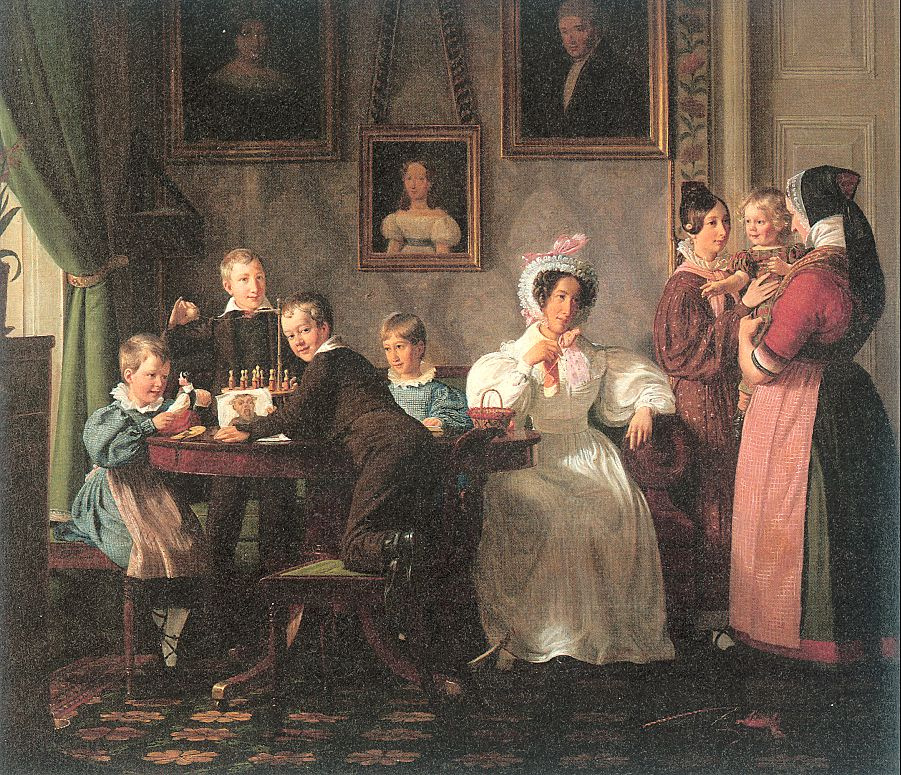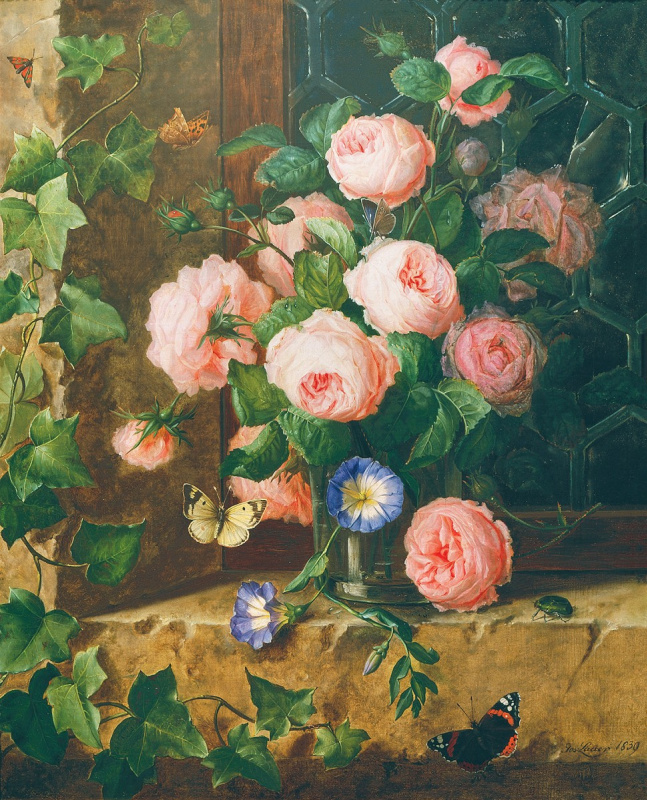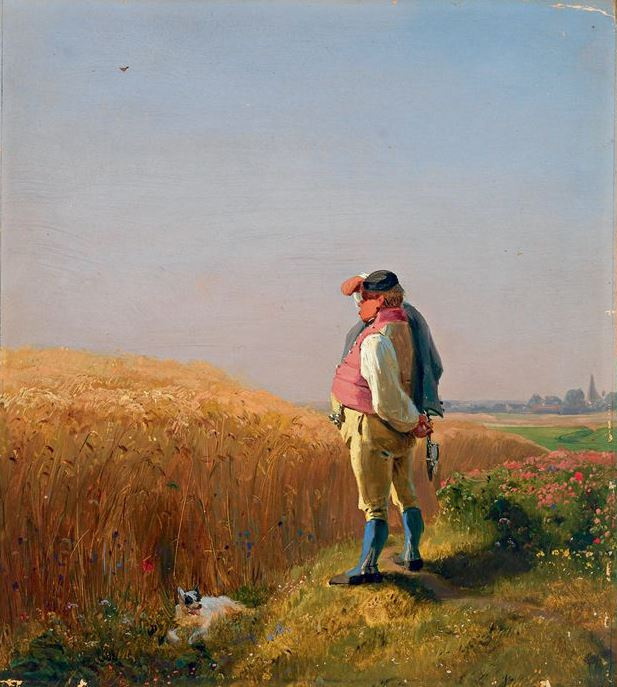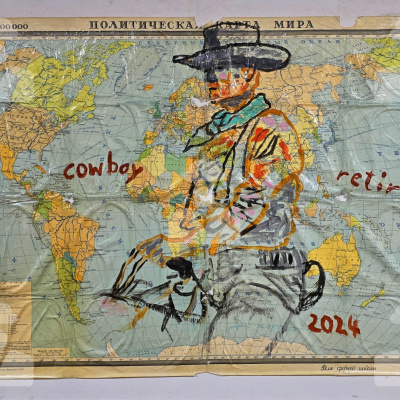Strictly speaking, Biedermeier is not the name of an art style, but the designation of the three decades at the beginning of the 19th century between the Napoleonic Wars and the European Revolutions. Nevertheless, works of art (especially the applied one) that appeared during this period also had their influence in the second half of the 20th century. The name of the style comes from the name of a fictional comic character, a symbol of middle class comfort.

Biedermeier is an art style in the transition period between neoclassicism
and romanticism
. It was widely spread in Germany, Austria, northern Italy and the Scandinavian countries. It dates from 1815 to 1848, from the time of the Congress of Vienna after the Napoleonic Wars until the start of European revolutions in 1848 The term is used primarily to refer to the artistic style that dominated in literature, music, visual arts, and interior design. Biedermeier influenced later styles, especially those that arose in Vienna.
Peace in the state
1856, 22.8×40 cm

The portrait of Gottlieb Biedermeier from the Munich magazine Fliegende Blätter, 1855
The style got its name much later; the first use of the term dates back to 1894. This is a slightly modified name for the fictional comic character Gottlieb Biedermaier, whose surname means "simple-minded Mr. Maier". He was a petty bourgeois who allegedly created naive poems and thoughts about life in the weekly Munich magazine Fliegende Blätter. It became a symbol of middle-class comfort, in which priority has been given to family life and private pursuits, such as writing letters or personal hobbies.
The artists associated with the Biedermeier style
During the Biedermeier period, not a single household did without a piano, an integral part of the popular soirées. Such parties reflected the growing cultural interests of the middle class in literature, dance, and poetry. All this became a topic for Biedermeier painters, among which Carl Spitzweg, Franz Krueger, Georg Friedrich Kersting, Ferdinand Georg Waldmüller, Friedrich von Amerling, Friedrich Gauermann and Pavel Fedotov stand out.
Man reading by the lamp
1814, 47.5×37 cm
Biedermeier painting is characterized by a fairly high quality level. The content and form made a harmonious aesthetic unity, and the creative spirit rushed up on the wings of change. In landscape paintings, artists constantly improved themselves in realistic representation. Such examples can be landscapes of the Prater Island and the Salzkammergut region by Ferdinand Georg Waldmüller, which were painted in the 1830s.
Historical painting was not only a way to describe the past, but also to create a message about the present, accurately conveying all the details, as in "The Controversy of the Coachmen" (1828) by Johann Michael Neder.
Portraiture strove to represent realistically people with their individual characteristics ("warts and everything else"). Here, Waldmüller again receives the most magnificent laurels. In turn, Amerling created sophisticated figured ensembles. He did not so much want to convey the resemblance as the whole image of the portrait model. At the same time, the artist weaved a story into his composition, as in the artwork "Rudolf von Arthaber with Children" (1837).
Historical painting was not only a way to describe the past, but also to create a message about the present, accurately conveying all the details, as in "The Controversy of the Coachmen" (1828) by Johann Michael Neder.
Portraiture strove to represent realistically people with their individual characteristics ("warts and everything else"). Here, Waldmüller again receives the most magnificent laurels. In turn, Amerling created sophisticated figured ensembles. He did not so much want to convey the resemblance as the whole image of the portrait model. At the same time, the artist weaved a story into his composition, as in the artwork "Rudolf von Arthaber with Children" (1837).
Moreover, the images of flowers and fruits feature the highest artistic skill and are based on deep scientific observations.
Nevertheless, the most significant successes were achieved in genre painting. Artists were inspired by the lives of peasants, bourgeoisie or workers, and they showed us the artistic evidence of the everyday life and special holiday occasions of that time. The subjects of Waldmüller's "Feast of Corpus Christi" experience children’s joys, and his composition "Early Spring in the Vienna Woods" (also known as "Brushwood Collectors in the Wienerwald") documents the daily work and life of the peasantry. The scene "The Consequences of Fidelka’s Death" of Pavel Fedotov illustrates the diversity and depth of human characters.
A delightful palette of the painters correlated with Goethe’s colour theory, as he found a connection between certain shades and man’s mood. For example, he recommended to paint walls in green and grey to create a comfortable atmosphere.
Nevertheless, the most significant successes were achieved in genre painting. Artists were inspired by the lives of peasants, bourgeoisie or workers, and they showed us the artistic evidence of the everyday life and special holiday occasions of that time. The subjects of Waldmüller's "Feast of Corpus Christi" experience children’s joys, and his composition "Early Spring in the Vienna Woods" (also known as "Brushwood Collectors in the Wienerwald") documents the daily work and life of the peasantry. The scene "The Consequences of Fidelka’s Death" of Pavel Fedotov illustrates the diversity and depth of human characters.
A delightful palette of the painters correlated with Goethe’s colour theory, as he found a connection between certain shades and man’s mood. For example, he recommended to paint walls in green and grey to create a comfortable atmosphere.
In Denmark, the Biedermeier period coincided with the "Danish Golden Age" a time of creative outburst when artists such as Christoffer Wilhelm Eckersberg, his students Wilhelm Bendz, Christen Købke, Constantin Hansen, Wilhelm Marstrand, and the neoclassical sculptor Bertel Thorvaldsen worked. In the same period, the neoclassical style of the Danish architecture developed. In particular, Copenhagen gained a new look thanks to the buildings designed by Christian Frederick Hansen and Michael Gottlieb Bindesbøll.
Biedermeier: applied art and design
However, Biedermeier had the most significant influence on interior design. The Empire style and period of the Directory were the precursors of the style in furniture; it was distinguished by amazing simplicity, practicality and functionality. Empire style implied splendour, the use of dark wood and multiple accessories made of gilded bronze.Biedermeier is more closely identified with the Directory, as it is associated with light wood from local forests (cherry, ash and oak), not burdened with metal decor. Surfaces were adorned with natural veins, knots or ebony accents for contrast; sometimes inlaid, although modest. A distinctive feature of Biedermeier furniture is its extremely restrained geometric appearance. Some objects received new roles, for example, the central table, which was previously an isolated central part of the interior, became the family table around which evening events took place.
In general, the Biedermeier style was a graphic evidence of the conflict of ideas between classicism and romanticism , which continued throughout the first half of the 19th century. Over time, the Biedermeier style was "romanticized" in accordance with the tastes of customers from a growing middle class who were eager to demonstrate their new wealth: the straight lines turned into curved and serpentine ones; the simple surfaces were increasingly decorated not only with natural materials; humanistic forms became more fantastic; furniture makers began their experiments with textures.
Furniture and lifestyle during the Biedermeier period became a theme for the 1896 exhibition at the Vienna Museum of Applied Arts. The elegant bizarre style was so popular with many visitors to the exhibition that it experienced its surge in popularity among European cabinetmakers until the advent of Art Deco. The simplicity and elegance of Biedermeier also influenced the leaders of the Vienna Secession and the Viennese workshops, as well as various later directions of the Bauhaus. The initial emphasis on lightness, utilitarianism, and personality contributed to the revival of the Biedermeier style by the 1970s.
Written by Vlad Maslov






